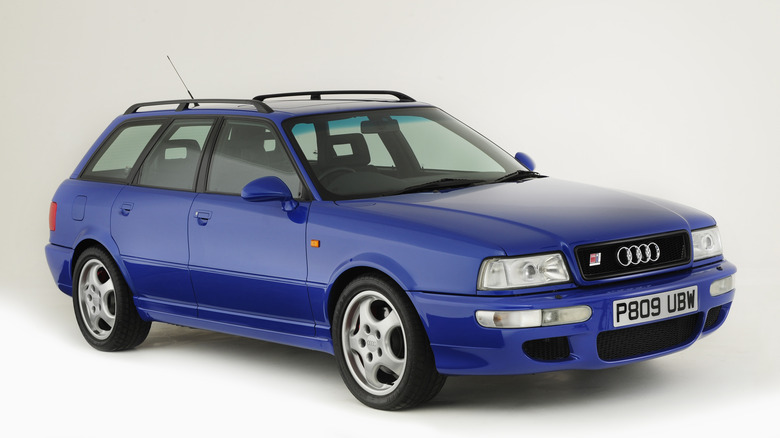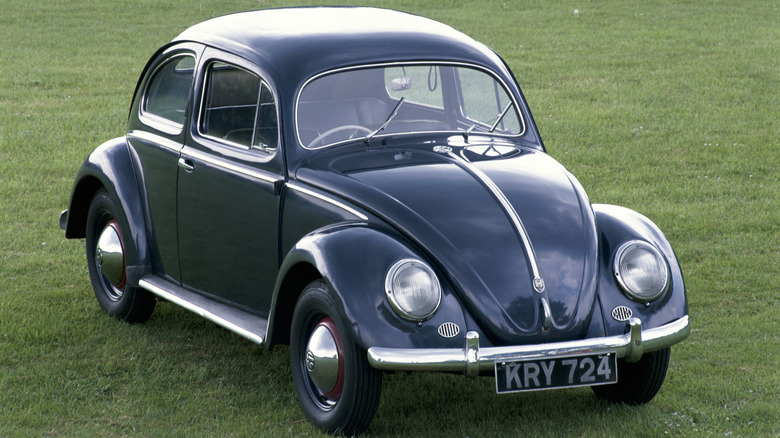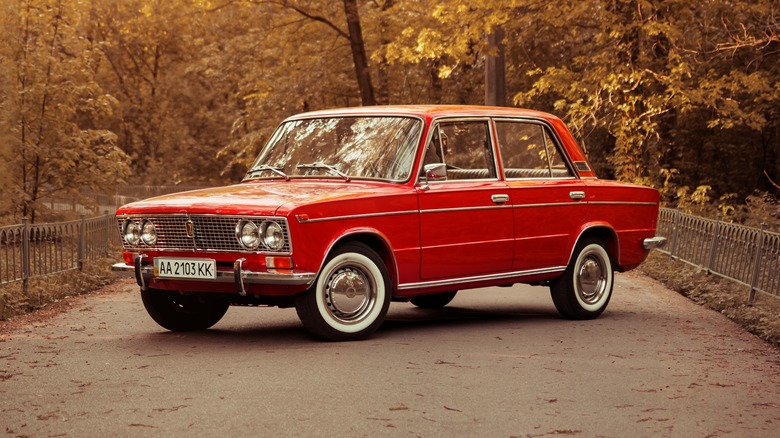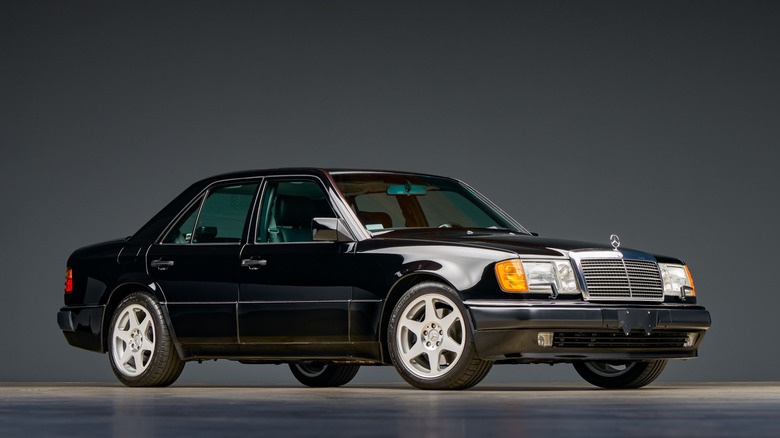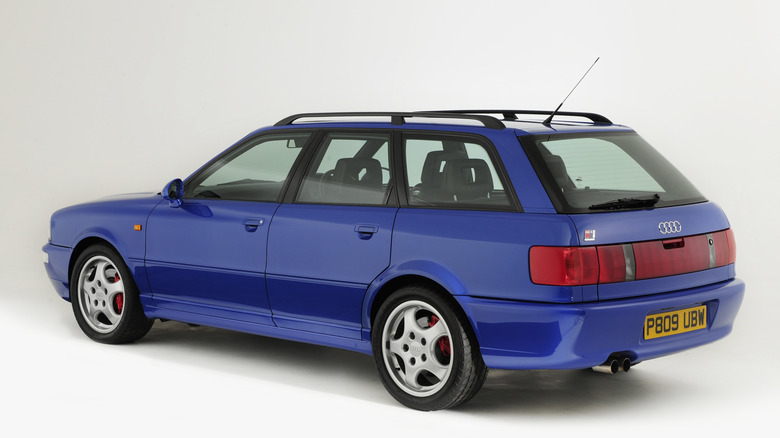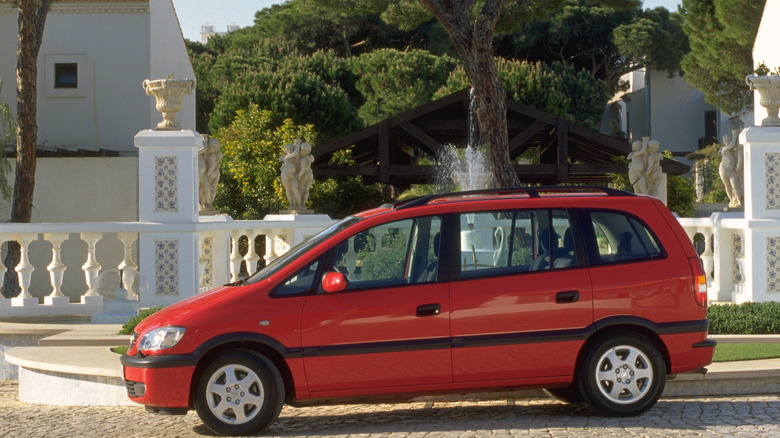5 Cars Porsche Made That Weren't Porsches
In a contemporary context, the Porsche name is synonymous with outright performance, with models like the 911, 956, and 917 becoming icons on both the road and the racetrack. However, when Ferdinand Porsche established the company in 1931 he had no intention of building his own cars, instead taking on projects from other companies and clients. Alongside designing race cars for teams like Auto Union, Porsche's other projects ranged from creating a mass-production car for the German people to designing military vehicles for Nazi Germany.
The release of Porsche's first car in 1948, known as the Type 356 Roadster, allowed the Stuttgart-based company to create performance cars under its own name while still generating a good amount of business from the development assignments of external customers. This business model helped Porsche in periods of financial difficulty, especially during the oil crisis of the 1970s, and after Porsche's sales fell by 72 percent between 1986 and 1993. Over the years, Porsche accepted contract opportunities from manufacturers ranging from Mercedes to Lada, with certain collaborations leading to some of the world's most popular vehicles.
Volkswagen Beetle
In 1933, Adolf Hitler, as recently appointed Chancellor of Germany, took over a public works project to build a vast network of expressways known as the autobahn. In conjunction with the new road network, Hitler also proposed a car that should be reliable enough for the autobahn, inexpensive enough for the average German to afford, and practical enough to comfortably seat a family of five. In 1934, the Porsche firm was tasked with designing and building this "people's car," or "Volkswagen" in German, based on a previous design developed by the office.
However, before the Volkswagen factory in Wolfsburg could produce a single Beetle, the facility was quickly converted into a munitions plant for the war effort and was subsequently bombed by Allied forces. Following the end of World War II, many German assets, including the company Volkswagen, were handed over to Allied powers, who initially dismissed the Beetle as a noisy and impractical car that wasn't worth anything to the automotive market. Nevertheless, once the Beetle was imported to the United States it proved its worth as a well-engineered, tough, economical, small car, becoming a massive success. By 1968, the Beetle became the best-selling car in the world, transforming its reputation from Hitler's "people's car" to a symbol of German recovery, healing, and world peace. While not classified as a Porsche, the Volkswagen Beetle was used as a foundation for the brand's first vehicle the 356, later known as the precursor to the 911.
VAZ-Porsche 2103
The 1970s weren't a bad period for Porsche exclusively, it was a difficult time for German car manufacturers in general due to the 1973 fuel crisis, which had an unsurprisingly negative impact on European sports car sales. While Porsche looked for collaboration opportunities within Germany in the decades to come, the brand took a more international approach in the 1970s.
Perhaps the strangest crossover moment came as a result of Porsche chairman Ernst Fuhrmann meeting with the USSR's automotive industry minister Viktor Polyakov in 1975, to discuss a partnership between Porsche and Soviet manufacturer Lada. To give Porsche a financial boost, Fuhrmann agreed to the deal in exchange for DM500,000, around 833,000 euros today. Porsche's first order of business was to rework the widely popular Lada 2103, which was based on the Fiat 124. While the Lada 2103 was a big seller in the Soviet Union, alterations were needed if it was to reach an international audience. Porsche went about de-Sovietizing the 2103 first, replacing its chrome accents with a body-colored plastic bumper and grille. Under the Lada's skin, Porsche reworked the suspension and the interior, replacing the dashboard and changing the steering wheel for one straight out of the flagship Porsche 928.
Ultimately, the collaboration was a bust, with only one prototype 2103 ever being created. Despite the failed 2103 project, Porsche continued working with Lada well into the future, contributing to the Lada Samara and even building a Dakar rally car together.
Mercedes Benz 500E
While Porsche might be better known for performance cars than other consumer-focused German manufacturers Mercedes, Audi, and BMW, these brands still constitute the field of competition, and eat into Porsche's profit margins. Nevertheless, in the late 1980s, as Porsche again faced financial difficulties, an opportunity arose from an unlikely source — long-standing rival, Mercedes Benz.
The late '80s and early '90s were a difficult time for Mercedes, too, as new competition in the personal luxury segment became international. In 1990, Lexus released the LS 400 and, on its first try, made all other luxury cars of the time look antiquated and tired. Powered by a silky-smooth V8 and equipped with groundbreaking luxury features, the LS 400 became such a threat to the E-Class that Mercedes decided to introduce a new V8 model of its own to fight back. However, Mercedes' development division was stretched working on the new S-Class, so the team outsourced the project — to Porsche.
Porsche's job was to figure out how to cram the massive M119 V8 from the 500SL into the pre-existing compact W124 chassis. Porsche determined that the only way to do that was to widen the frame rails of the chassis. The widened chassis presented other issues for Mercedes, most importantly that the Mercedes Sindelfingen assembly line couldn't accommodate the extra width. So, Porsche handled the W124 500E's chassis modifications and final assembly at its plant in Zuffenhausen, with the cars traveling back and forth between plants twice during the build process, for each manufacturer to work its magic. The resulting 500E is considered one of the best luxury sedans ever built, simultaneously helping Porsche out of a financial squeeze.
Audi RS2 Avant
Audi's RS vehicles represent the highest echelon of performance available from the Bavarian marque. Over the years, models like the Audi RS4 and RS7 have consistently kept BMW and Mercedes on its toes, providing major competition for motorsport-bred models in the same class, including the BMW M3 and Mercedes E63 AMG. While Audi's RS range is best known for blisteringly quick sports coupes and sedans, the car that started the RS program came in an unlikely form — a sports wagon.
The Audi RS2 story is very similar to that of the Mercedes 500E, as both were born out of Porsche's need for side work during financially difficult times. Audi needed to replace the iconic Audi Quattro and compete with BMW's M3. In order to achieve this, Audi enlisted the help of Porsche, who was more than willing to take on the task.
The RS2 started as a pedestrian Audi 80 station wagon before Porsche got its hands on it. The biggest upgrade came from Porsche reworking one of Audi's beautiful turbocharged five-cylinder engines, producing 311 horsepower and 302 lb-ft of torque in production form. Porsche was also responsible for chassis tuning, providing a bespoke suspension setup for the project. The RS2 perfectly merged the best elements of Audi and Porsche, with the car wearing the collaboration on its sleeve. Enthusiasts might even recognize that the RS2 features components taken directly from the 911, including its brakes, side mirrors, and wheels.
Opel Zafira A
In many ways, Porsche's projects with Mercedes and Audi made perfect sense, as the respective performance divisions had a lot to benefit from Porsche's guidance. While Opel certainly has some stand-out performance models, like the Opel GT and Speedster, it's more widely known for well-made, mass-produced civilian cars. Nevertheless, in a strange turn of events, Opel approached Porsche for help in developing one of those practical models, a minivan to be exact.
In the late 1990s, Opel was a subsidiary of General Motors, who purchased the company in 1929. During the '90s, the minivan market was booming around the world, with models like the Ford Windstar and Toyota Previa selling like hotcakes. General Motors wanted to get a piece of the action and decided to do so with the Opel brand, approaching Porsche for help after seeing the success of the Mercedes 500E and Audi RS2. In fact, Porsche handled most of the minivan's development, supplied only with the Opel platform to work with as a foundation.
Porsche's contributions included a revolutionary seating design that allowed two additional seats to be pulled out of the floor, turning the Zafira into a seven-seater. While Porsche might not have put its performance pedigree to use with the development of the Opel Zafira, it turned out that Porsche were also pretty good at building minivans, with the Zafira receiving positive reviews by the European automotive media.
